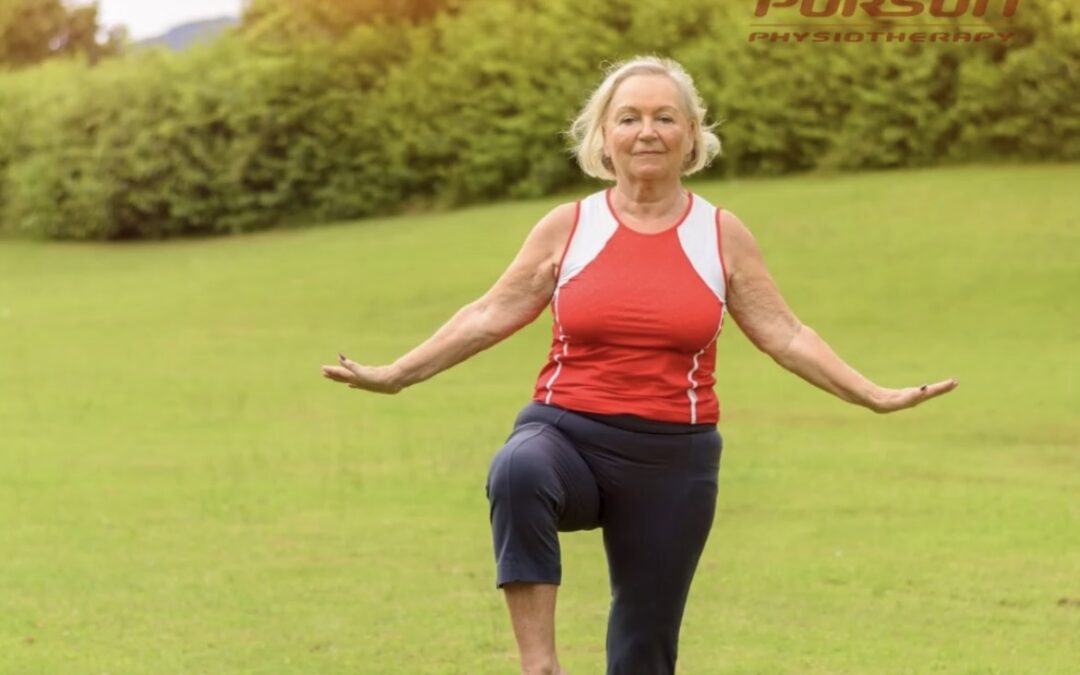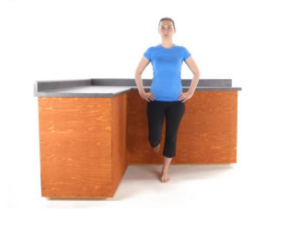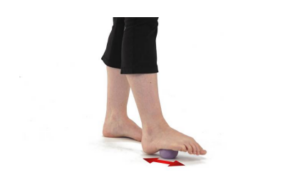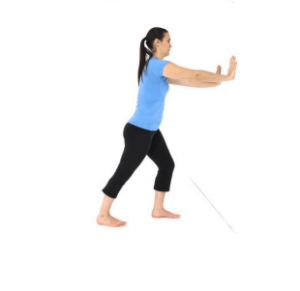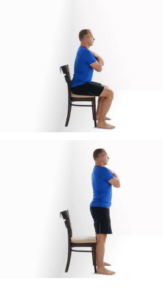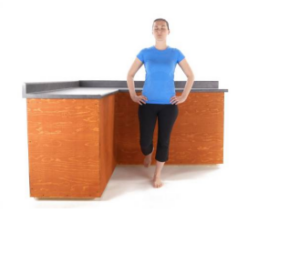“Successful 10-second one-legged stance performance predicts survival in middle-aged and older individuals”
Araujo CG, de Souza e Silva CG, Laukkanen JA, et al
British Journal of Sports Medicine 2022;56:975-980. https://bjsm.bmj.com/content/56/17/975
Wow, what a bold statement! Most of us are in constant search for optimal life balance. In this case, we are talking about actual standing on one foot balance. Balance is that important as a predictor of good health.
How is your standing balance? Test yourself and compare…
Be safe – if you know this will be a challenge, make sure you are standing with a counter behind you. If you have recently had an injury or surgery, consult your physio before starting balance practice.
First step is to test yourself to know if your balance is where it should be. Let’s perform the Single Leg Stance Test. Helpful if you have a helper to time. Put your hands on your hips. Start the timer as soon as you lift up one foot. Timer stops as soon as you put that foot back down. Record a time for both your right and left leg.
How did you do compared to these “norms”?
Age-Related Normative Values
Springer, B. A., Marin, R. H., Cyhan, T., Roberts, H., & Gill, N. W. (2007). Normative Values for the Unipedal Stance Test with Eyes Open and Closed. Journal of Geriatric Physical Therapy, 30(1), 8–15. https://doi.org/10.1519/00139143-200704000-00003
18-39 years-old (eyes open): 43 seconds
40-49 years-old (eyes open): 40 seconds
50-59 years-old (eyes open): 37 seconds
60-69 years-old (eyes open): 26.9 seconds
70-79 years-old (eyes open): 18.3 seconds
80-99 years-old (eyes open): 5.6 seconds
Is there room for improvement? Here are a few exercises that could improve your balance. You can try them all at once or you can do each one for a few days and test as you go to see which ones have an impact.
Safety first! If you have a recent injury or specific concerns, have a discussion with your physio about the appropriateness of these exercises.
Balance Exercise #1
Improve your “proprioception”…wake up the sensors in your feet so that they can help you with your balance.
1-2 minutes each foot/day
Balance Exercise #2
Calf strength: Stand on one foot and go straight up and down on one foot.
You can hold on for this one – fingertips on counter. Don’t lean.
10-30 reps, once a day
Balance Exercise #3
Is your calf tight from doing calf raises? A tight calf could also influence your balance. Focus on your calf stretch for the next few days.
Hold 3×30 sec, 3x/day
Balance Exercise #4
Core and Leg strength – your trunk and hip muscles have to work well to optimize your balance.
Start this movement with some glute squeeze, then push through the legs to stand up. Keep those knees hip width apart. Sit back down SLOWLY with control.
Aim for 10 reps, 3x/day depending on your starting abilities.
Balance Exercise #5
WARNING Advanced – do not do this if you have a history of falling or concerns about your balance. If this is too challenging for you, please work with your physio on some less advanced options.
Eyes closed! Start facing a counter with fingertips just barely resting on edge. Close your eyes. Lift one foot up for single leg stance. How long can you hold your balance with your eyes closed?
Repeat x 5 on each leg, once/day, holding for as long as you can.
Keep in mind that your standing time with eyes closed is not expected to be as long as with eyes open.
Retest yourself after a few days of exercise.
What did you learn about your balance?
Which of these items were challenging for you?
Did you improve your standing time on one foot?
Which seemed to help to improve your balance?
Improving your balance can reduce your chance of falling. It’s a ‘use it or lose it’ function so it is great to work on as you get older. Every bit of improvement can make a difference to your health and safety.

